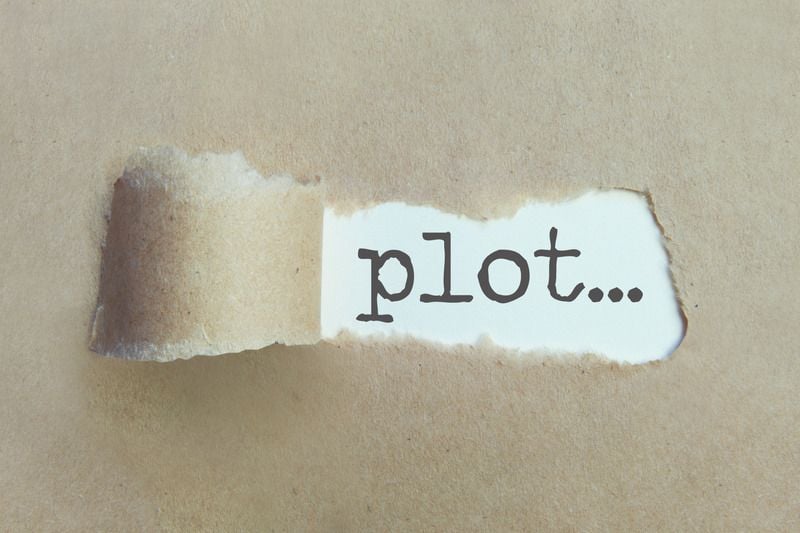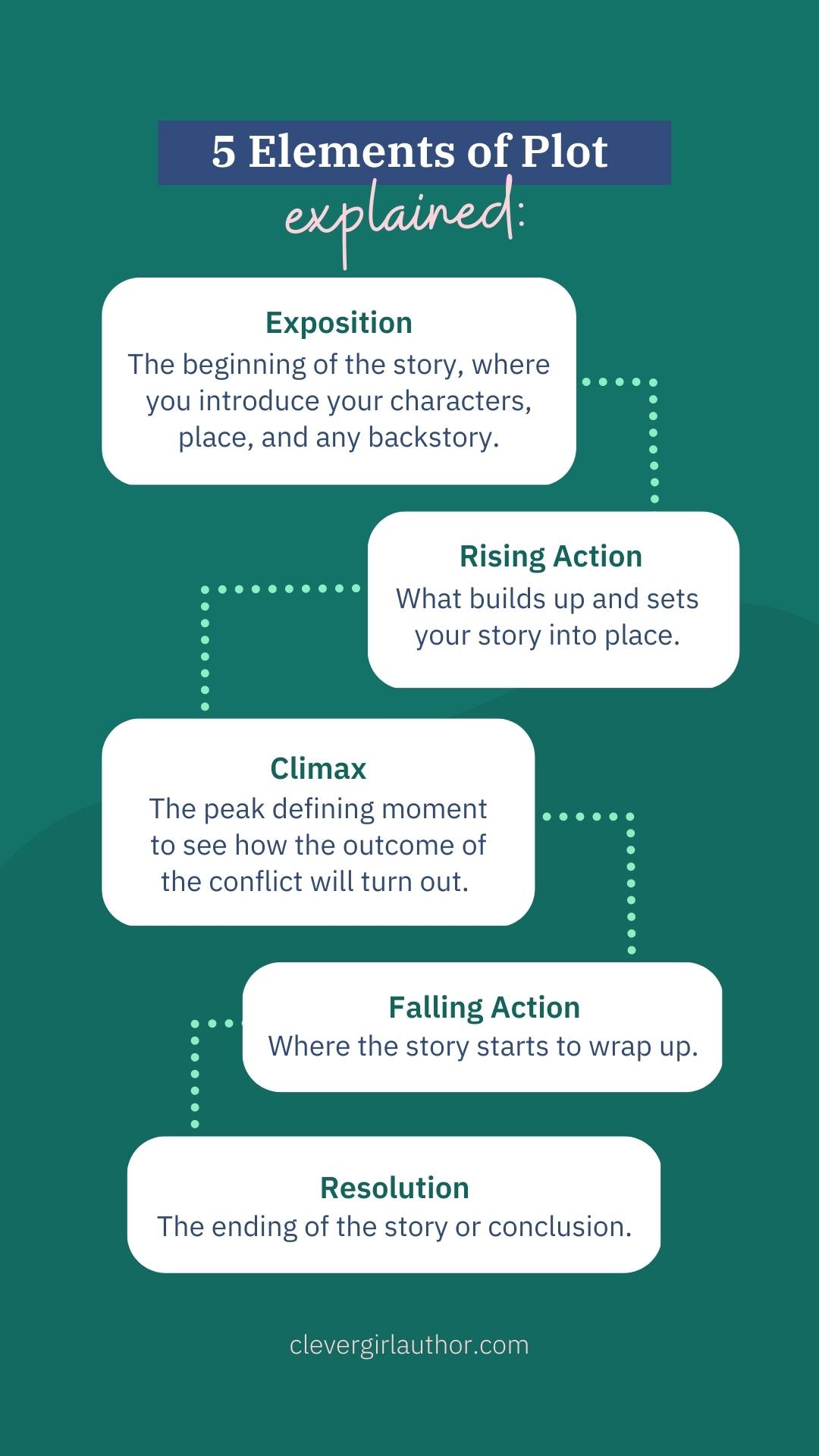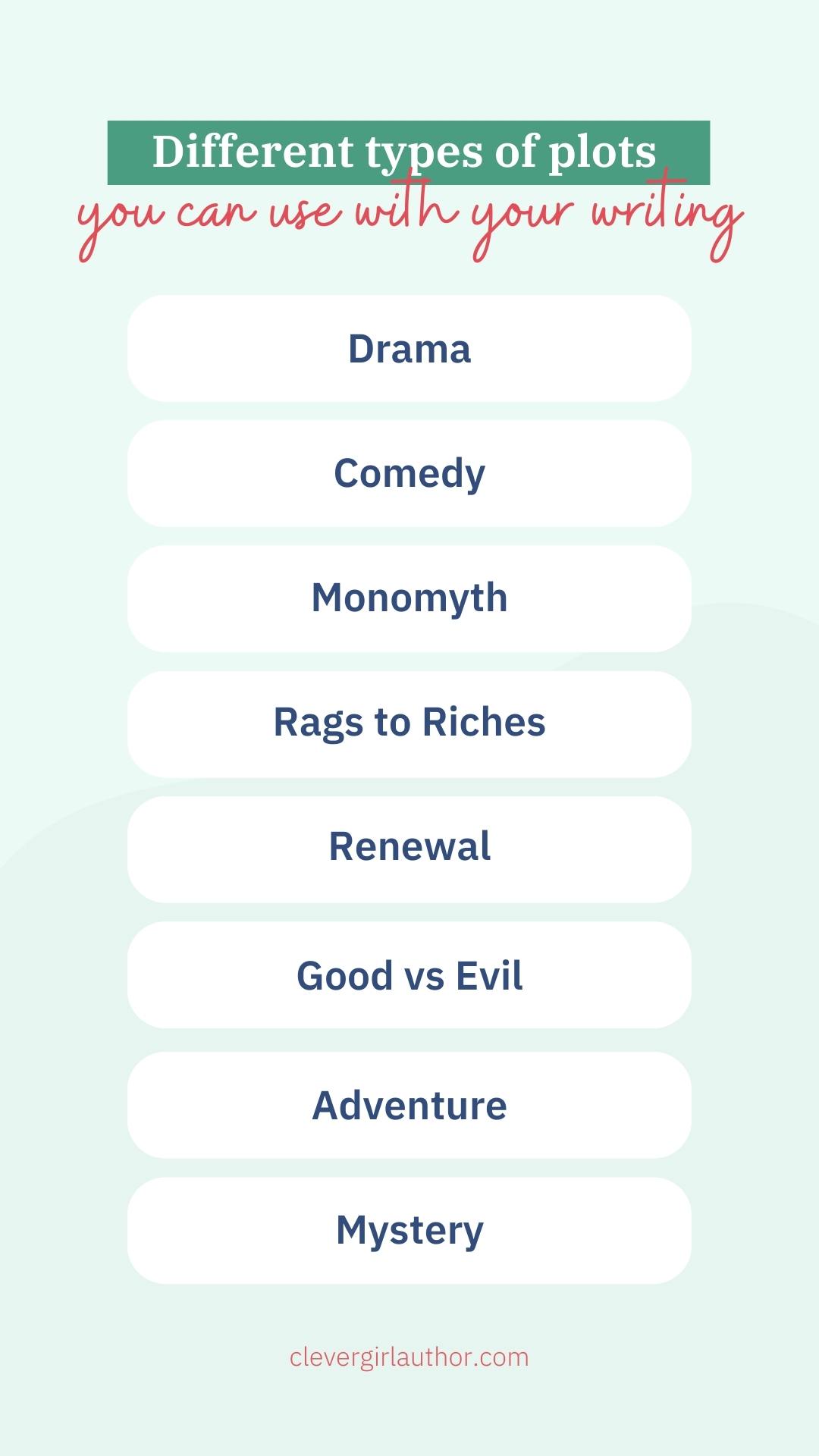Every writer wants readers to like their book, but how do you write a book people keep returning to? While writing style and character development are essential, the most important aspect of writing a book is understanding the 5 elements of plot. Read more to find out how you can incorporate the elements of a plot and write a book that readers won’t be able to put down!

Table of contents
- What is a plot?
- What sort of books need plots?
- 5 Elements of plot explained
- Expert tip: keep the plot connected
- How to incorporate the 5 parts of the plot
- The different types of plots that you can use with your writing
- What is an example of a plot point in a story?
- What is the difference between a plot and a summary?
- Related articles on writing a book
- Keep your readers engaged by using the elements of a plot !
What is a plot?
A plot is a sequence of events that make up a story, and having a plot gives a story meaning. These incidents usually have something to do with each other.
There are many aspects to the plot of a story that put the main character or characters into different, usually challenging situations until the end or resolution of the story.
Keep in mind that there can be more than one plot and subplot.
How does have a plot tie into writing a book?
Another way to think of a plot is as the blueprint for your story. Having a plot before you start writing your story can help you as you outline your story.
As writers, having a plot and detailed book outline helps us focus, especially if it’s a complex novel or series, such as the very popular The Lords of the Rings or Game of Thrones: A Song of Ice and Fire.
While it takes more time to create a plot before you start writing, it can help you figure out what type of story you’re trying to write and identify any plot issues before you start writing.
The differences between plot and story
Having a plot isn’t the same thing as a story. As mentioned earlier, a plot is a series of events. It tells the who, what, and where.
A story, on the other hand, is more about the emotional experience. It isn’t just facts. It includes how the characters feel and why their lives are different because of the story.
While plot and story are important, we will focus on the plot and how to create a great one with your writing.
What sort of books need plots?
Most literary and mainstream fiction books have plots. Having a plot in a book not only keeps readers engaged but can also help you plan out your novel or your short story. A plot is just one of the tools you can use in your writer’s toolkit.
5 Elements of plot explained
The different elements of a plot were defined by the 19th-century German playwright Gustav Freytag (who learned from Horace and Aristotle). His structure, called Freytag’s Pyramid, includes some of the basic structures that most plots use.
There are 5 elements of plot including the exposition, the rising action, the climax, the falling action, and the resolution.
Let’s go over each of them in more detail.

1. Exposition
One of the main parts of the plot is the exposition. It’s the beginning of the novel or short story, where you introduce your characters, place, and any backstory readers need to know.
The exposition should be short because you want your readers to care about what happens next. A lengthy exposition with a lot of background and details may be unnecessary and could scare readers away. Instead, try to weave background information into the action of the story.
2. Rising action
Another element of the plot is rising action. It’s what sets your story into place. Additionally, there may be many moments of conflict that slowly build up as your story progresses.
The rising action is like a wave before it breaches a shore. It starts out at sea, building up slowly and rising until it falls back to the sea. It is also one of the longest sections of a novel.
3. Climax
The climax is the peak defining moment to see how the outcome of the conflict will turn out. It’s usually when everything changes, or the character has to make an important decision.
It’s one of the most essential parts of a plot. The reader should have no idea what happens next. A good climax will leave a reader on the edge of their seat.
4. Falling action
The falling action is one of the 5 elements of plot when the story starts to wrap up. Now that the character has made a decision or faced a pivotal point, you can also start to fix any other problems that have happened in the book.
5. Resolution
The resolution is the ending of the story or conclusion. It should be clear that this is the final part of the story, and it should make sense to the reader.
When I write a resolution, I want the reader to feel that the story was worthwhile and answer their questions. It is important that the character’s initial purpose is fulfilled or that things are concluded in a way that feels final (unless writing a sequel).
Expert tip: keep the plot connected
When creating the plot of a story, make it one of your writing goals to connect everything.
As an example, if your main character is struggling to invent something for time travel, you don’t want to throw in unnecessary ideas about something unrelated, like their interest in moving to France, or irrelevant details about the character.
Instead, focus on the main points of the story, and be sure that anything extra you include relates in some way to the main point. Otherwise, readers may become confused or stop reading because it doesn’t make sense.
How to incorporate the 5 parts of the plot
So, how does a writer incorporate the 5 elements of plot into their story? See how this works in a well-known book.
Using the plot elements in a fiction book example
Let’s look at The Great Gatsby by F. Scott Fitzgerald as an example (Spoilers ahead!).
Exposition: Nick Carroway recently moved to the East Coast and has dinner with his rich cousin, Daisy, and her husband, Tom Buchanan.
Rising action: During the dinner, Nick learns that Tom is having an affair and is dragged to the mistress’s apartment. He later learns that his mysterious neighbor, Jay Gatsby, is in love with Daisy. He decides to help them become reunited.
Climax: Daisy tries to leave Tom for Gatsby, but on the way home, she runs over Tom’s mistress, Myrtle.
Falling action: Gatsby decides to take responsibility for the death of Myrtle to save Daisy. Myrtle’s husband kills Gatsby in revenge.
Resolution: Nick is heartbroken by Gatsby’s death, and Daisy moves on as if nothing happened.
Putting the example into action
As you can see in the example, Fitzgerald has incorporated all 5 elements of plot into his novel. As a writer, you can use the same type of structure in your own story.
Introduce the characters, topics and setting at the beginning of the book. Then incorporate an incident or something that causes the characters to either do something or question something about themselves. The incident puts in place the main events of the story.
Then, figure out what the climax is. Is there a fight scene? A sudden marriage proposal?
Figure out what will help the character face their fears or insecurities before the resolution. Once the issue is resolved, you can wrap up the story.
The different types of plots that you can use with your writing
While the 5 elements of plot tend to be the same for most stories, there are different types of plot that can help you figure out how to structure your novel. Here are some common types of plots:

Drama
A drama portrays events through written dialog. There are usually many conflicts, and the characters undergo major changes.
The tension and anticipation are progressively built up until the climax. A classic play like Oedipus Rex is an example of drama.
There are also sub-genres of drama, such as tragedy and melodrama.
A tragedy usually ends sadly, and the character’s goal is not achieved. In a melodrama, events, and characters are exaggerated to convey emotion.
Comedy
A comedy usually has lighter plot elements. While there can be conflict and hardships, it never ends up being painful but is often funny.
The characters make it through the journey or conflict without being harmed, and everything turns out okay in the end. The Hitchhiker’s Guide to the Galaxy by Douglas Adams is a type of comedy.
Monomyth
The monomyth, or hero’s journey, as it’s sometimes called, is a plot where something happens to the hero and inspires them to do something.
They then must take on a quest to solve a situation. The Lord of the Rings is an example of a monomyth.
Rags to riches
The rags-to-riches plot is a classic story in which a poor person faces an event that makes them rich or successful.
The Cinderella fairytale is a good example of this. She is impoverished and, through a magical event, lives happily ever after.
Renewal
The renewal plot is when a character is transformed from bad to good.
An event in the past often causes them to go bad, but facing a few trials helps them grow and see the good.
For example, Scrooge in A Christmas Carol is a renewal or rebirth plot.
Good vs evil
The good vs evil type of plot is composed of someone who is good fighting someone who is bad. It can be one group of people or an individual. In many cases, it’s clear why the characters are good or bad.
For example, Star Wars stories are usually a good vs evil plot in which the evil group (the empire) keeps throwing up obstacles until the protagonist wins.
Adventure
An adventure plot usually consists of a voyage and a return, and don’t forget to include the 5 elements of plot! The main character will begin a journey, have a load of adventures, and then return home wiser (and sometimes richer).
One example of an adventure plot is The Odyssey.
Mystery
The mystery plot is a very specific type of genre. In these types of plots, there is an event that triggers an investigation as the main character tries to discover the truth.
Agatha Christie was an incredibly famous writer of this particular type of plot.
What is an example of a plot point in a story?
The plot of a story can have different plot points. For instance, if I write a story about someone who is lost in the middle of nowhere in the desert, then a plot point might be when they happen upon a cabin or a lake.
It’s something that changes the flow of the story. It disrupts what is currently happening and introduces something new.
What is the difference between a plot and a summary?
The parts of the plot will involve many different things happening in the story in sequence, while a summary is just an overall look at the story as a whole. While they are related, they are not the same.
For instance, a summary might be that the main character journeys through the mountains, faces many trials, and finds his long-lost brother at the end of the story.
A plot would be more like this: the main character quits his job after discovering he has a long-lost brother, decides to travel through the mountains in a foreign country, is almost eaten by a bear, discovers he can talk to animals, finds inner peace, makes his way to his destination with help from some other hikers, and then finds his long lost brother.
Related articles on writing a book
Did you enjoy this article? For more articles on book writing, check out these related posts.
- The Importance Of A Manuscript Assessment
- Interesting Topics To Write About For A Book!
- Book Word Count By Genre: How Many Words Should You Write?
Keep your readers engaged by using the elements of a plot!
Understanding the 5 elements of plot can help you figure out which type of story you want to tell and make sure that you are keeping the reader engaged.
The different parts of a plot are straightforward, which means you can adapt them to tell nearly any type of story, whether it’s a drama, good vs. evil plot, or mystery novel.
Once you understand how a plot works, you’re on your way to creating an awesome book! After you finish writing, consider a manuscript assessment and how to write a cover letter to a publisher.
